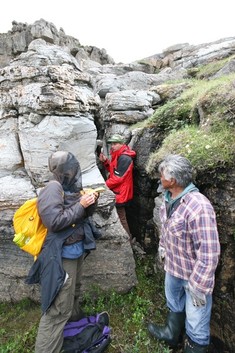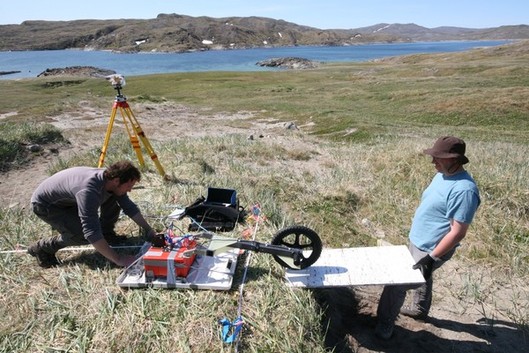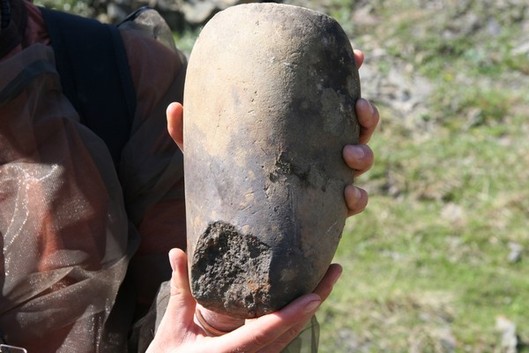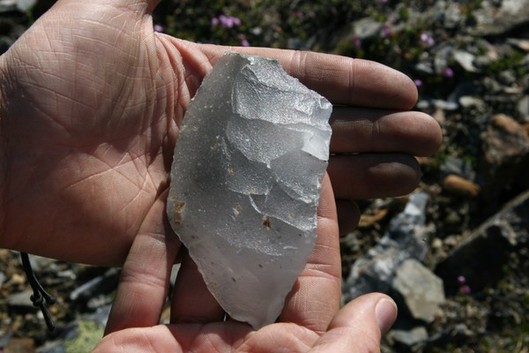Early sources for the fabrication of stone tools
ᑭᓇᒨᒻᒪ¯ᑦ Pierre Desrosiers
In the summer of 2009, Avataq carried out an archaeological project to study how the raw materials used to make lithic (stone) tools were acquired. Obtaining appropriate raw materials was a crucial activity for the Inuit and the people who preceded them, the Palaeo-Eskimos. We can gain some important information by comparing raw materials sites and habitation sites. For example, Ramah chert, which was acquired in Labrador, was used to make tools that have been found discarded as far away as the Salluit region, hundreds of kilometres from the original source. This project was funded by the ARUC research programme (CRSH) and by Parks Canada (for Labrador).
The expedition began in July in the Umiujaq area. For the first week, the team was composed of Willie Kumarluk (hunter-guide), Joe Kumarluk Crow (assistant-guide), Marianne-Marilou Leclerc (student, Université de Montréal) and Pierre M. Desrosiers (archaeologist). We visited the islands to the north of the Patirtuuq (Nastapoka) River. For the second week, Adrian Burke (professor, Université de Montréal) and Jessica Giraud (post-doctorate, Avataq Cultural Institute) joined the team. We explored Tasiujaq (Lake Guillaume-Delisle) and the neighbouring islands to research sources of chert, crystalline quartz and copper.
Adrian Burke and Pierre M. Desrosiers then traveled to the Salluit area, where the main goal was to carry out non-destructive geophysical research at the Tayara site (KbFk-7) to detect the presence of structures beneath the soil in zones that have not yet been excavated. The team included Isaacie Padlayat (hunter-guide), Jimmy Kadjulik (assistant hunter-guide), Yves Monette (archaeologist, Canadian Museum of Civilizations) and Jean-Christophe Aznar (specialist is geophysics, INRS).
Saglak and Ramah Bays in Labrador were the final stop on this field trip. Avataq had received an invitation from Jenneth Curtis (archaeologist, Parks Canada) to help research the quarries where Ramah chert was extracted. This project was carried out in collaboration with the Nunatsiavut government, represented by archaeologist Jamie Brake. The team was joined by some students from the region and some Inuit guides from Kangiqsujuaq and Nain who were responsible for monitoring the movements of polar bears in the park.




